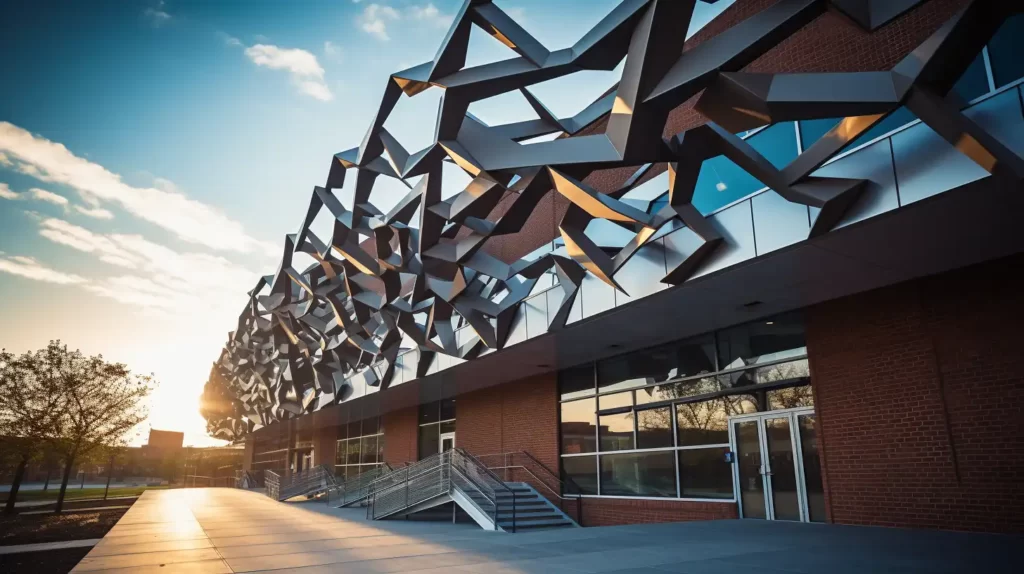The world of architecture is constantly evolving, and one of the essential elements that contribute to a building’s aesthetic and functional aspects is the architectural metal handrails. These handrails not only provide safety but also add a touch of elegance and modernity to any structure. In this article, we will delve into the significance of architectural metal handrails and their impact on modern design.

The Importance of Architectural Metal Handrails
Architectural metal handrails are crucial in ensuring safety and accessibility in various structures, including residential, commercial, and public buildings. They provide support and stability, especially for individuals with mobility challenges. Moreover, these handrails serve as an architectural feature that enhances the overall design of a building.
Types of Architectural Metal Handrails
There are several types of architectural metal handrails, each offering unique benefits and design possibilities. Some popular materials include stainless steel, aluminum, and wrought iron. Each material has its characteristics, which make it suitable for specific applications.
Stainless Steel Handrails
Stainless steel is a popular choice for architectural metal handrails due to its durability, resistance to corrosion, and sleek appearance. It’s often used in modern and contemporary designs, providing a clean and polished look.
Aluminum Handrails
Aluminum is lightweight and resistant to rust, making it an excellent choice for outdoor applications. Its versatile nature allows for various design options, from simple to intricate patterns.
Wrought Iron Handrails
Wrought iron handrails are known for their strength and classic appearance. They are often used in traditional and historic buildings, adding a touch of elegance and charm.
Design Considerations for Architectural Metal Handrails
When designing architectural metal handrails, several factors must be considered to ensure functionality and aesthetics. These include the building’s architectural style, the intended use of the handrails, and local building codes and regulations.
Building Style
The design of the handrails should complement the overall architectural style of the building. For instance, sleek and minimalist designs are well-suited for modern structures, while ornate and decorative handrails may be more appropriate for traditional settings.
Intended Use
The primary purpose of the handrails must be considered during the design process. Whether they are intended for residential use, commercial spaces, or public areas will influence the choice of materials and design.
Building Codes and Regulations
Compliance with local building codes and regulations is essential when designing and installing architectural metal handrails. These codes ensure the safety and accessibility of the handrails for all users.
Installation and Maintenance of Architectural Metal Handrails
Proper installation and maintenance are crucial for the longevity and functionality of architectural metal handrails. It is essential to work with experienced professionals who understand the intricacies of metal fabrication and installation.
Professional Installation
Hiring a skilled fabricator and installer is vital to ensure the handrails are installed correctly and securely. This minimizes the risk of accidents and prolongs the life of the handrails.
Regular Maintenance
Regular maintenance is necessary to keep the handrails in optimal condition. This includes cleaning, inspecting for damage, and performing any necessary repairs. For more information on maintaining metal finishes, visit this guide.
The Future of Architectural Metal Handrails
As architectural trends continue to evolve, so too will the design and functionality of architectural metal handrails. Innovations in materials and fabrication techniques will enable architects and designers to push the boundaries of what is possible, creating even more stunning and functional handrails.
Innovative Materials
The development of new materials will play a significant role in the future of architectural metal handrails. These materials will offer enhanced durability, aesthetics, and environmental benefits.
Advanced Fabrication Techniques
Advancements in fabrication techniques, such as 3D printing and CNC machining, will allow for more intricate and customizable designs, meeting the diverse needs of modern architecture.
Conclusion
Architectural metal handrails are an essential component of modern design, providing both safety and aesthetic appeal. By understanding their importance, types, design considerations, and future trends, architects and designers can create stunning and functional spaces that cater to the needs of all users.

FAQ
What are the benefits of using metal handrails?
Metal handrails offer durability, strength, and aesthetic appeal, making them suitable for various architectural styles and applications.
How do I choose the right material for my handrails?
The choice of material depends on factors such as the building’s style, intended use, and environmental conditions. Common options include stainless steel, aluminum, and wrought iron.
Are metal handrails suitable for outdoor use?
Yes, many metal handrails, such as those made from aluminum or stainless steel, are resistant to corrosion and suitable for outdoor applications.
This article contains affiliate links. We may earn a commission at no extra cost to you.

